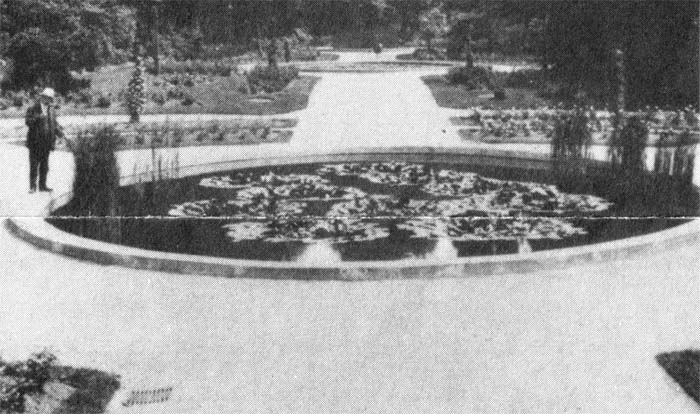
| Home | Tours/Lectures | Books | Maps | Posters | Pictures | Contact |

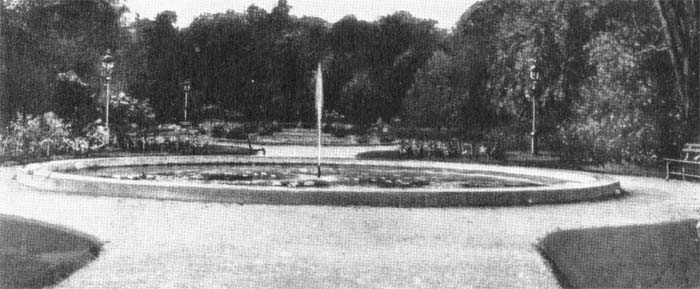
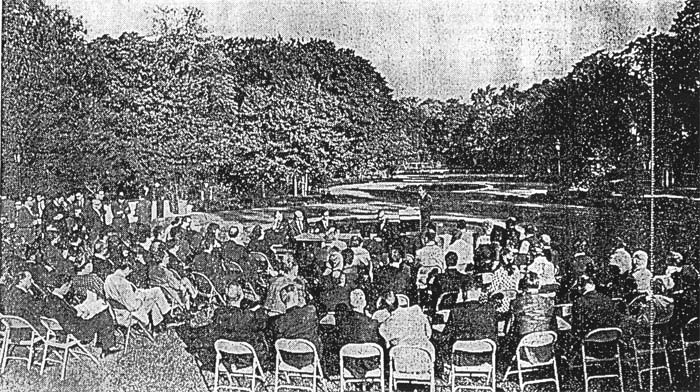
The early proposal to make "a lake of aquatic plants upon the arid waste near the Vale Cashmere" was carried out by constructing three lily pools with fountains in the upper section of what had been the children's playground. Tropical waterlilies did splendidly in the humid heat but roses in the beds surrounding the pools appear in contemporary photographs as spindly and mostly defoliated due to lack of air drainage. The misfortunes of the Rose Garden continued: in 1969, it suffered a working over by a singularly ungifted firm of landscapers who created a formal terraced garden suitable to Longwood Gardens where it would have received the intensive care -- hand weeding, hand clipping and edging -- it demanded. It was pretentious and totally inappropriate in an obscure corner of the park where predictably it received no care at all.
The main feature of the garden was a series of three pools equipped with multiple fountainheads. These were turned on just once, for one of then-Mayor John Lindsay's breakfast meetings. All the pipes leaked underground, one of the pools overflowed, and the whole place was flooded. When a concerned visitor complained about the inoperative fountains and the faulty plumbing that soaked the grass, August Heckscher, then park commissioner, replied:
Shortly after the fountains were turned on, it was discovered that there was a defect in the circulating system and that one of the fountains required further modification. The contractor is responsible for effecting the necessary repairs. It is expected that the fountain will be operating during the spring.
The letter is dated December 11, 1969. Spring has been long in coming. After years, the pools still stand empty except for beer cans and the refuse of chicken barbecues.
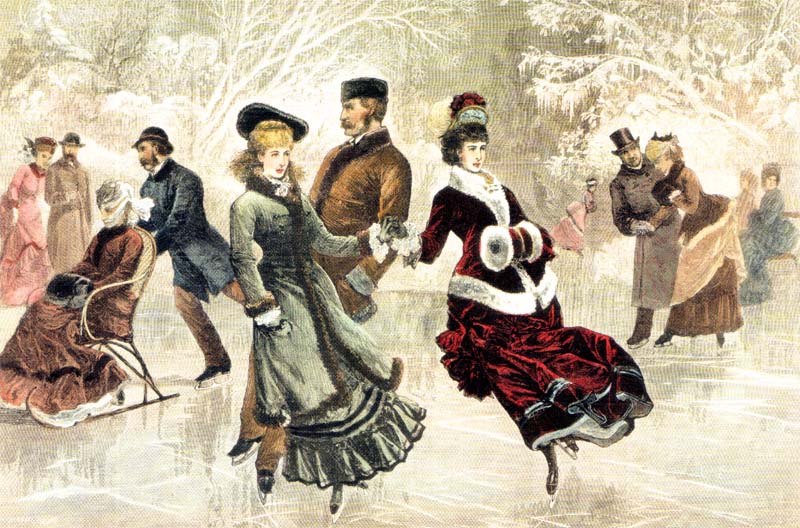
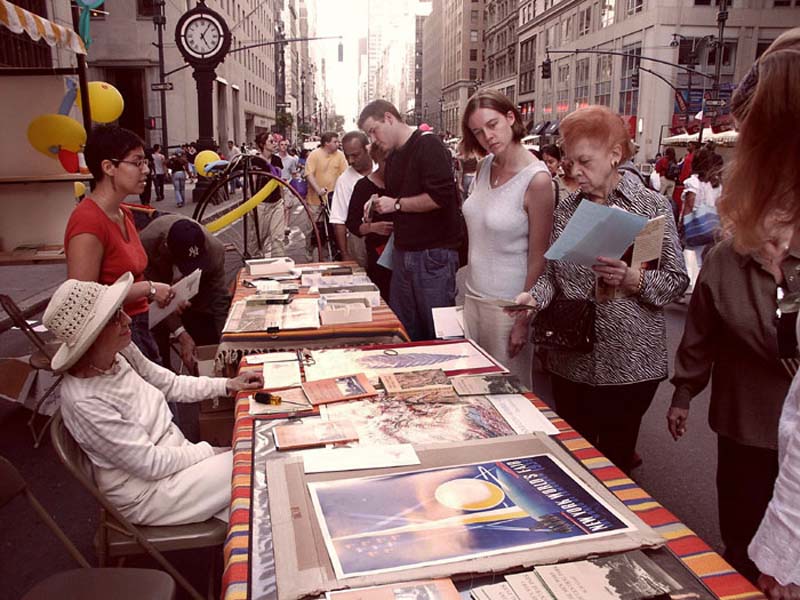
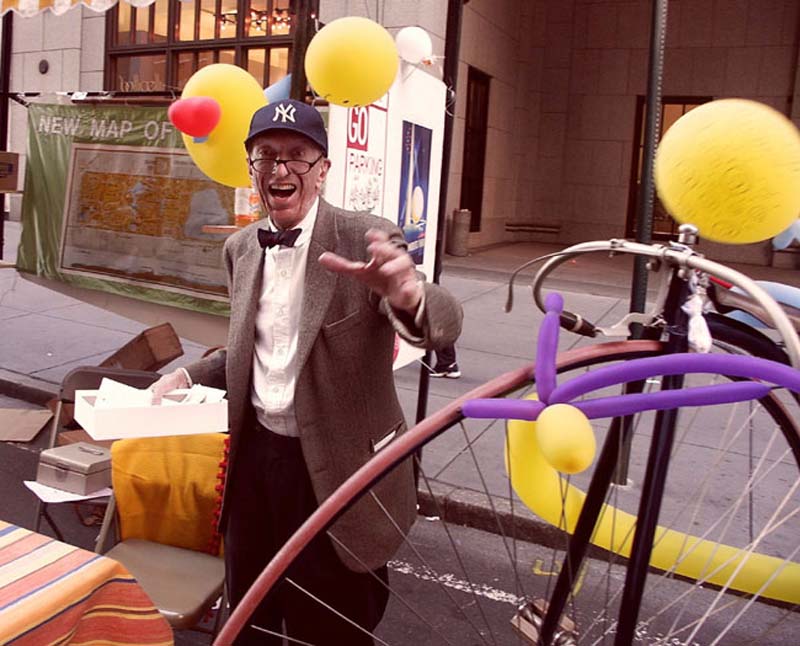
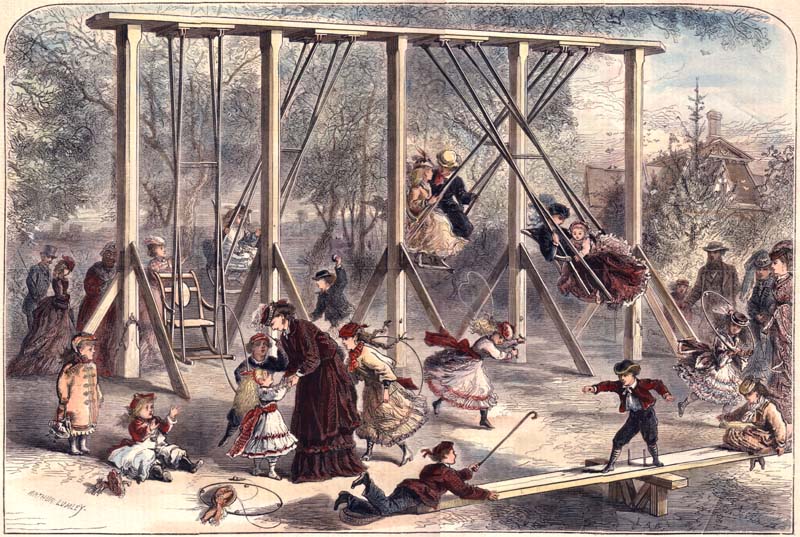
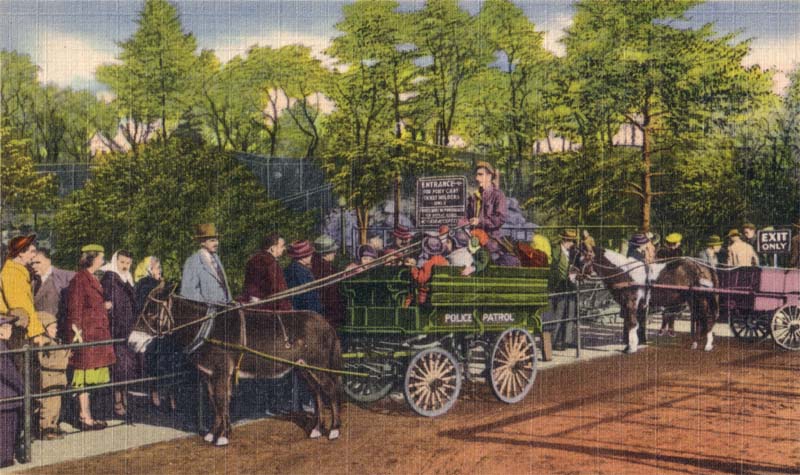
Image courtesy of Barbara Havranek
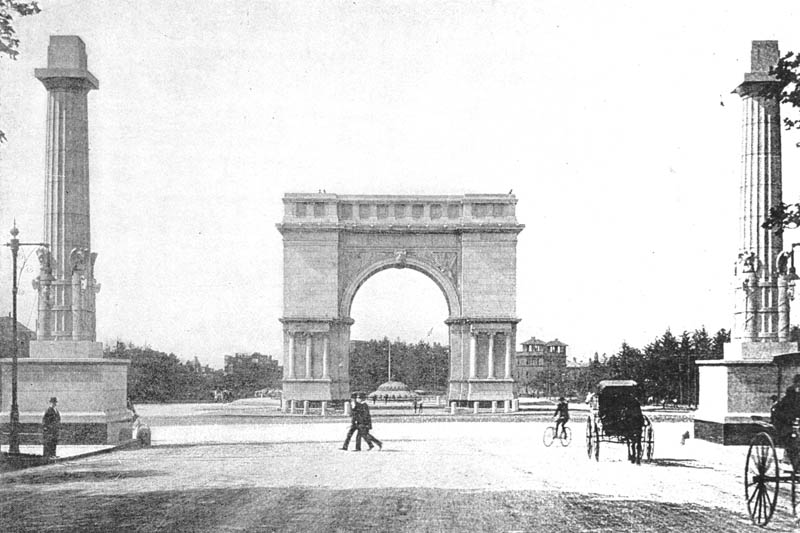
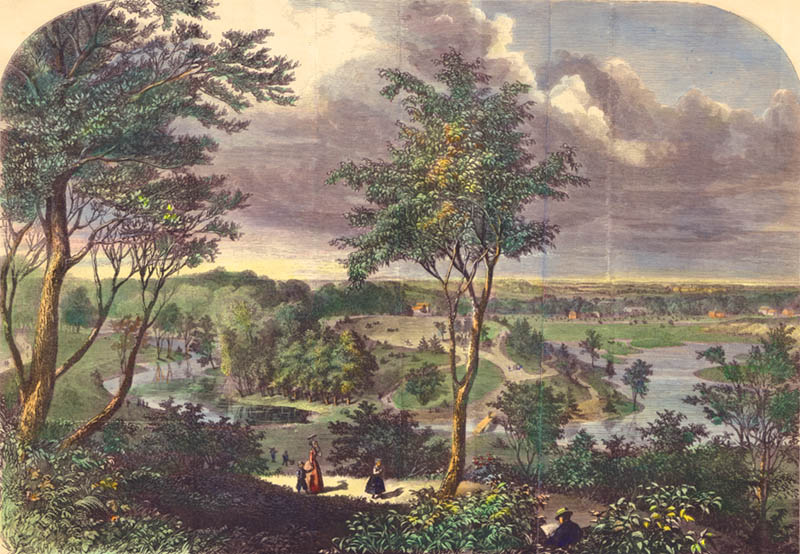
The cartoon accompanying this number of the JOURNAL presents one of the many charming views to be found in Prospect Park, Brooklyn. This park possesses rare natural advantages; it is located on the hills in the rear of the city, between two and three miles from Fulton Ferry, and embraces within its limits hills, ravines, brooks, and, more than all, clusters of forest-trees of many of the hardiest and most beautiful varieties to be found on the continent. The views from all portions of the park are charming, but the most comprehensive is that from the "Lookout," near the eastern entrance. From this point, on a clear day, one can take in at a glance the coast from Far Rockaway to Sandy Hook, with the Atlantic as a background; the Bay and the Hudson, from Jersey Heights to the northerly terminus of the Palisades, and the cities of New York, Brooklyn, and Jersey City, with all the islands in the Bay, East River, and Sound.
Notwithstanding the natural advantages possessed by this park, it is indebted for much of its present attractiveness to the designs of Messrs. Olmsted and Vaux, the architects; the careful elaboration of these designs by Mr. John Bogart, engineer, and the good taste of O. C. Bullard, park inspector, under whose immediate supervision all trees, vines, and shrubbery, have been set out or transplanted, and the general gardening operations carried on. In its original state the park contained detached pieces of woods, separated by fields and roads, presenting thereby a somewhat broken and inartistic effect. Over six hundred of the trees have been transplanted within two years, and have been so arranged that all these groups are connected in one harmonious whole -- a result which has greatly enhanced the beauty of the grounds. Of these trees so removed but seven have died.
An artificial stream, to be supplied from a well, is now constructing, which will wind through the woods and between the hills, its course varied by pools, rapids, and cascades, and its waters enlivened with fish of various kinds. The well which is to supply the stream is of great magnitude, and is one of the sights of the park. It is located on the south side of Lookout Hill, near the lake. Its depth is fifty-one feet; its diameter fifty feet at the bottom, and forty-five at the top. The supply is an excellent cold spring water, of sufficient capacity, in case of a failure of the water-supply from other sources, to furnish all that is required for the ornamented waters, and at all times to keep them in a condition favorable to health. A large number of drinking-fountains will be supplied from the same. The interior of the well can be visited by means of a spiral staircase.
The lake, a portion of which is shown in our illustration, now has a water surface of fifteen acres, but when completed it will contain about fifty acres, and will be abundantly supplied with pleasure-boats of all kinds. When we say that the park is over half finished, we mean to say that over one-half of the labor necessary has been completed; but this labor has much, in fact most of it, been of a character which does not show its results to the casual visitor, the purely ornamental being still almost untouched, and of a character which it will probably take two years to develop. One of the finest views in the park is that from the rustic shelter near the principal entrance. The main entrance, which is reached by the Flatbush Avenue and Atlantic Avenue cars, is a large circular space called the "Plaza," which is covered with Belgian pavement, and which contains a splendid fountain and a bronze statue of Abraham Lincoln. The plaza is made really beautiful by three graceful artificial mounds covered with turf, which serve to conceal the approaches and to break the fiat uniformity of stone which would otherwise be presented. A similar plaza will be prepared at the eastern entrance.